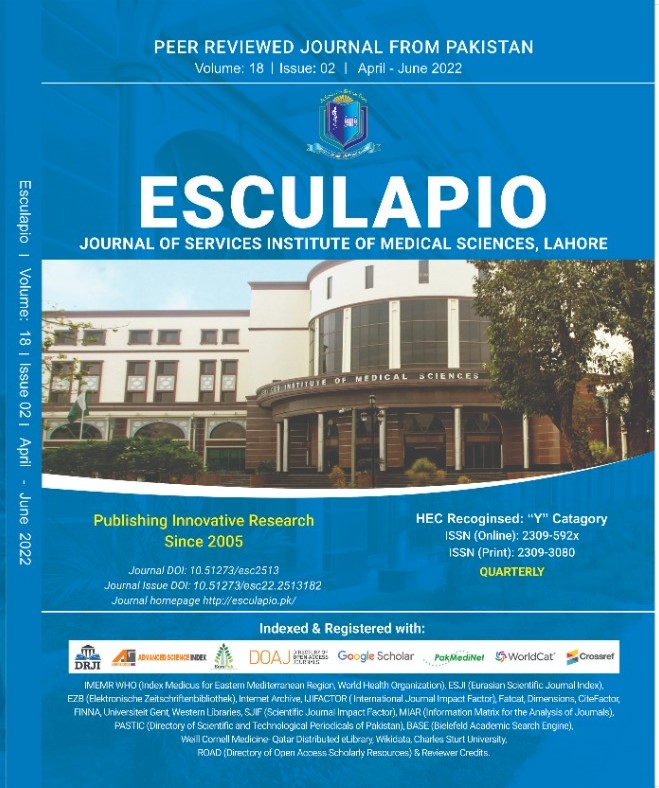Evaluation of Cutting Seton as A Surgical Treatment for High Anorectal Fistula-a Retrospective Observational Study
DOI:
https://doi.org/10.51273/esc22.251825Keywords:
Fecal incontinence, recurrence, high anorectal fistulae, Polypropylene, cutting setonAbstract
Objective: To determine the frequency of postoperative fecal incontinence and recurrence in patients with
high anorectal fistulae after surgical treatment using Polypropylene as a cutting Seton.
Method: The retrospective observational single center study was conducted at Department of Surgery,
Service Hospital, Lahore from September, 2018 to September, 2020. After applying inclusion criteria, data of
170 patients were reviewed for postoperative fecal incontinence and recurrence.
Results: The mean age of patients was 41.59 ± 7.61 years with minimum and maximum age as 15 and 50
years. There were 99 (58.2%) male and 71(41.8%) female cases. The mean duration of fistula was 8.03 ±
1.39 weeks with minimum and maximum duration as 6 and 10 weeks. Patients were followed up for two years, 5
(2.9%) patients had recurrence and 2 (1.4%) cases had fecal incontinence.
Conclusion: The frequency of postoperative fecal incontinence and recurrence in patients with high
anorectal fistulae after surgical treatment using Polypropylene as a cutting seton was minimal, hence, cutting
setone seems to be an effective and relatively safe treatment for high anal fistula with low rate of incontinence.
How to cite: Qureshi AB, Naseer N, Taqi H. Evaluation of Cutting Seton as A Surgical Treatment for High Anorectal Fistula-a
Retrospective Observational Study. Esculapio - JSIMS 2022;18(02):129-133
DOI: https://doi.org/10.51273/esc22.251825










